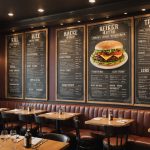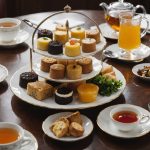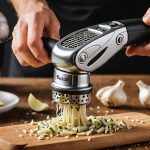Understanding Menu Engineering
Menu Engineering is a scientific method used in the restaurant industry to evaluate the profitability and popularity of menu items, enhancing overall restaurant profitability. By analyzing data and understanding customer preferences, menu engineering helps restaurants strategically design their menus, boosting customer satisfaction and increasing sales. Effective menu design plays a crucial role as it implements principles that attract attention to high-margin items and make menus more visually appealing.
Key Principles of Effective Menu Design
Adhering to menu design principles is essential to harness the full potential of menu engineering. These principles include arranging items in a way that guides customer choices, often through strategic placement of high-profit items in prime menu spots—like the top-right corner. Additionally, employing tasteful typography and tempting descriptions can entice customers, making the menu more engaging and informative.
In the same genre : Transform Your Restaurant’s Vibe: Master Feng Shui for Boosted Energy and Seamless Flow
Impact on Restaurant Profitability
Integrating menu engineering effectively influences a restaurant’s profitability by optimizing the menu layout to highlight profit-generating dishes. It ensures that resources are allocated wisely, targeting both popular and less ordered items. By focusing on data-driven decisions, restaurants can refine their offerings, keeping customer preferences aligned with business goals, and ultimately driving long-term success.
Case Studies of Successful Themed Restaurants
Studying themed restaurants’ success stories provides valuable insights into effective menu strategies. These eateries skillfully combine unique themes with strategic menu design, creating memorable dining experiences that attract and retain customers.
Topic to read : Transform Your Classic British Menu with an Unforgettable Tea Pairing Experience: Elevate, Engage, and Delight
Examples of Themed Restaurants
Consider the success story of Rainforest Cafe. This restaurant capitalizes on its jungle theme to deliver an immersive environment, which is mirrored in its menu. By dedicating attention to both the theme and menu choice, they create a cohesive experience that enhances customer enjoyment.
Analysis of Menu Strategies
Examining the menu strategies of themed restaurants reveals patterns. Successful venues like Planet Hollywood and Hard Rock Cafe integrate theme-based dishes and compelling narratives in their menus. This approach not only reinforces the theme but also engages customers on an emotional level, encouraging curiosity and repeat visits.
Lessons Learned from Success Stories
These success stories highlight the strength of theme-driven menu engineering in captivating audiences. By understanding the synergies between theme, menu design, and customer preferences, restaurants can craft environments and offerings that resonate deeply with patrons. This reinforces brand loyalty and encourages word-of-mouth promotion, crucial for sustained success.
Practical Tips for Designing Attractive Menus
Creating an appealing menu is vital for enhancing the dining experience and driving sales. The visual appeal of a menu is not merely aesthetic but significantly influences customer decisions and satisfaction.
Elements of Visual Design
Effective visual design involves thoughtful use of colours, fonts, and images. High-contrast color schemes can draw attention to specific sections, while readable typography ensures easy navigation. Simple yet appealing graphics can enhance the menu without distracting from its content. An inviting menu design gives a positive first impression.
Importance of Layout and Organisation
The menu layout plays a crucial role in guiding customer choices. Organising items in logical categories or sections helps diners locate preferences quickly. Strategic placement, such as positioning high-margin items on the right-hand side, can increase sales. The layout should support smooth eye movement across the menu.
Highlighting High-Margin Items
To spotlight profitable dishes, consider using techniques like bold fonts, boxes, or shaded backgrounds. These distinct markers help in drawing eye attention instantly. Adding narrative descriptions or chef recommendations can further entice customers, merging informative content with enticing presentation. Properly highlighting items influences buying behavior, ensuring that premium choices get noticed and ordered.
Pricing Strategies in Menu Engineering
In the dynamic restaurant industry, an effective pricing strategy is crucial for profit maximization. Strategic menu pricing not only influences customer perception but also plays a pivotal role in balancing profitability with customer satisfaction.
Psychological Pricing Techniques
Employing psychological pricing techniques can significantly affect customer perception of value. One common method is the “charm pricing” strategy, where prices end in .99 or .95. This approach creates the impression of a better deal. Additionally, anchoring—highlighting a higher-priced item near the desired choice—can steer customers towards a mid-range option that feels like a bargain. This technique helps increase perceived value without altering product quality.
Competitive Analysis for Effective Pricing
A thorough competitive analysis ensures that your pricing remains attractive. By evaluating competitor menus, restaurants can identify where their value perception could improve. Understanding market trends and customer expectations allows restaurants to adjust prices strategically, ensuring they stay competitive while maximizing profits.
Adjusting Prices Based on Customer Perception
Continuously monitoring customer feedback and sales data helps in making informed pricing adjustments. If a popular dish isn’t selling well, slight price modifications can reposition it as a better deal. Aligning menu pricing with customer expectations guarantees satisfaction and loyalty, vital for long-term success.
The Role of Visual Elements on Customer Choices
Visual elements in a menu significantly affect customer choices by tapping into menu psychology. The interplay of images, graphics, and color schemes can subconsciously guide purchasing decisions, making it crucial for restaurants to thoughtfully curate these elements. A well-chosen image or graphic not only enhances menu aesthetics but also creates a narrative connection between the diner and the dish, often encouraging choice through visual appeal.
The Effect of Color Schemes
Colors influence not just appetite but also engagement levels. Warm tones like red and orange can stimulate hunger, making them popular in menu designs. Meanwhile, cooler hues such as blues and greens can convey freshness and calm, potentially impacting choices in healthier or premium sections. Changing color schemes can redefine how menu segments are perceived, aligning them with desired customer behaviors.
Incorporating Storytelling through Menu Visuals
Storytelling is an important facet of visual menu elements. By weaving narratives into imagery, restaurants can evoke emotions and memories, creating an immersive dining experience. Customers are more likely to select dishes that tell a story, as it adds an emotional layer to the decision-making process, making the meal not just about taste but also about the experience.
Tools and Resources for Implementing Menu Strategies
In the ever-evolving restaurant landscape, having the right tools and resources is crucial for effective menu engineering. These tools assist in refining menu strategies to enhance both customer satisfaction and restaurant profitability.
Overview of Menu Engineering Tools
A range of specialized software solutions are available for menu engineering. These tools help analyze sales data, track food costs, and understand customer preferences. Platforms like MenuPro and ChefTec offer features that allow for dynamic adjustments and strategic pricing, ensuring that menus remain profitable.
Resources for Learning Menu Design
For those interested in diving deeper into menu design principles, various online courses and workshops are accessible. Websites such as Udemy and Coursera provide tutorials that cover everything from the basics to advanced strategies. These resources help restaurateurs stay informed and knowledgeable about the latest trends and techniques.
Best Practices for Ongoing Review
Regular menu assessments are vital for maintaining effective menu strategies. Utilizing customer feedback and employing implementation techniques can guide iterative improvements. This continuous cycle of review and adjustment ensures that a restaurant’s menu remains competitive and appealing, further solidifying its success in the industry.











